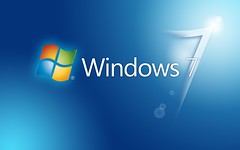Search This Blog
Get Started With Windows 7 XP Mode
By Remote Computer Support on 1:26 AM
Filed Under: on windows 7, window 7, windows 7, windows 7 how to, windows 7 release, windows 7 requirements, windows 7 update, windows 7 xp, windows xp 7

With the release of Windows 7 Professional and Ultimate, Microsoft is including a small gift called Mode XP. So XP is a virtual machine running Windows XP. I call it a gift for similarly equipped Vista would have incurred additional cost of a license for XP. Microsoft gives XP mode as a means to have a totally modern computing environment, without sacrificing the support of previous versions.
Guide to running with XP Mode
So XP is a dead end if your CPU has hardware virtualization support enabled. To check if your CPU is compatible, Intel and AMD both offer tools to identify your CPU and what features it offers. If your CPU supports virtualization, this feature must be enabled in the BIOS.
Ad icon
To download Virtual PC and XP mode, follow this link. So XP is a 472MB file, so spend some time for both the download and installation.
First install Virtual PC, then the XP mode. Both facilities are simple and the default settings will suffice for most situations. When XP setup launches and so will need to provide a password for the local XP user mode so that XP automatically creates the virtual machine. Finally you must decide whether or not you want automatic updates. After this information is collected, completed the installation of Windows XP so.
Windows 7 XP Mode
When installation is complete so XP will launch in desktop mode. Here, you have access to the full XP environment. Desktop Mode is useful when you want to use a desktop environment completely separate from its install base of Windows 7. It is important to note that by default key combinations for shortcut to spend only XP desktop mode when running full screen. Also, while not able to drag and drop between the operating systems are different, they share a clipboard. Also, you have complete access to the system host file, while in desktop mode.
When XP mode really shines is with Seamless Mode, which lets you launch applications directly from Windows 7 XP menus. To use the seamless mode, first install an application in desktop mode, then exit and close the virtual machine. The application you just installed then you can find in the menu on the host PC Start All Programs, Microsoft Virtual PC, Windows XP mode applications.
When the application is started from the host operating system, XP launches in the background and the application appears as if it were running natively on Windows 7. Apps run this way are called virtual appliances. If you cannot find the default start menu for convenient, you can move the shortcut to any traditional place a shortcut can be placed. If you want to virtualize the application does not automatically create a shortcut on the Start menu, or application is bundled with Windows (Internet Explorer 6. 0 for example), simply create a shortcut on the desktop mode in C: \ Documents and Settings \ All Users \ Start Menu and the application appears on the start menu under the host Windows XP Application Mode.
Seamless mode is not completely transparent; there are relationship issues with her. In multiple monitor configurations, the virtual appliance lives only on the primary monitor. In addition, virtual appliances will not play along with the feature of Windows 7 Snap. Your Windows needed to be manually resized. It is also important to note that the virtual desktop applications and so cannot be used simultaneously. Finally, you must keep in mind that a complete operating system needs to boot before you can run a virtual appliance, so a little patience will be needed in that first pitch.
Despite some limitations, IT managers will find that XP provides a viable way to deal with legacy applications while fully modernizing the desktop environment.


0 comments for this post